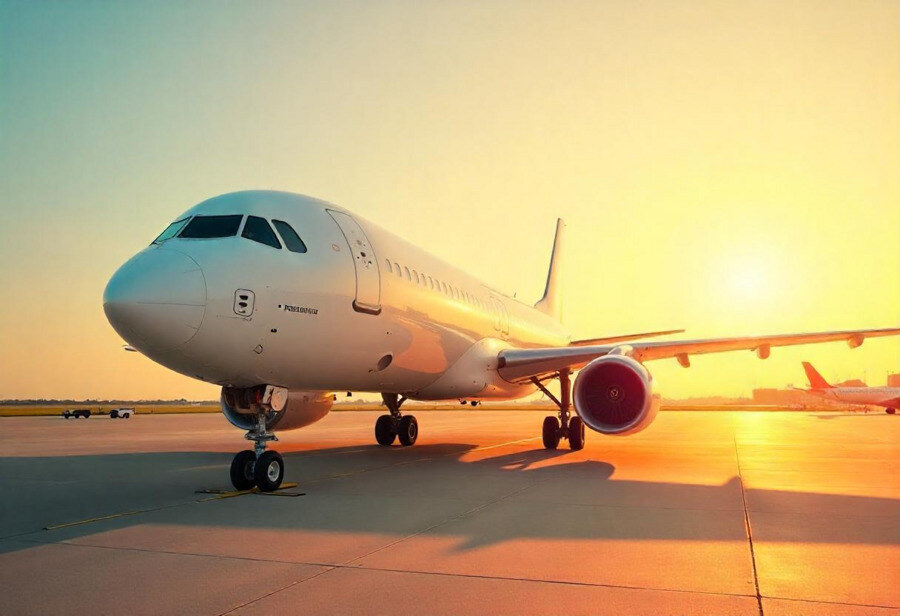≡-Canada Becomes Unexpected Destination After United Airlines Flight From Washington To Frankfurt Makes Emergency Landing – Viral of Today
<> Viral of Today <>
Home
»
AIRLINE NEWS
»
Canada Becomes Unexpected Destination After United Airlines Flight From Washington To Frankfurt Makes Emergency Landing
Thursday, June 12, 2025
Canada has become an unexpected destination following an emergency landing by United Airlines flight UA989, which was en route from Washington Dulles International Airport (IAD) to Frankfurt Airport (FRA). The flight, which was diverted to Halifax Stanfield International Airport (YHZ) on June 11, 2025, was forced to make an unscheduled stop due to a medical emergency onboard. Passengers, who were initially expecting a short, routine diversion, ended up stranded on the tarmac for over seven hours, a situation that has drawn considerable attention to both the airline’s operational procedures and the pivotal role of Canadian airports in handling such emergencies. This unexpected detour to Canada has highlighted the country’s importance as a vital transit point for international flights in times of crisis.
A United Airlines flight from Washington Dulles International Airport (IAD) to Frankfurt Airport (FRA) made an emergency landing at Halifax Stanfield International Airport (YHZ) on Monday, June 11, 2025, following a medical emergency onboard. The flight, UA989, which was operating with a Boeing 777-300ER aircraft, had been in the air for over two hours when the crew reported the emergency. Initially, passengers were told that the stopover at Halifax would be brief, but this turned into an extended delay lasting over 7 hours, with the aircraft remaining on the tarmac throughout this time.
Flight UA989, which had taken off from Washington at 22:07 UTC, was en route to Frankfurt when a medical emergency occurred. The crew made the decision to divert to Halifax, Canada, a nearby airport with medical facilities that could assist in dealing with the situation. The crew reported the emergency and coordinated with ground services at Halifax to ensure the aircraft landed safely. However, passengers were left confused and frustrated as the short stopover turned into a prolonged stay on the tarmac with no clear updates from the airline.
As the aircraft stayed grounded for a prolonged period, additional problems emerged that worsened the situation. After refueling, the crew discovered a fuel imbalance between the wings that required attention. This issue led to further adjustments, extending the tarmac delay and leaving passengers stuck on the plane. During this time, numerous passengers expressed their frustration, highlighting the poor communication and the discomfort of being confined to the aircraft for hours without the chance to deplane.
Compounding the issue, concerns about crew duty time limits were raised. Flight crews are governed by strict regulations regarding their working hours, and the extended delay meant that the crew was approaching the limit of their allowable work hours. If the crew exceeded their duty time, it would have caused further delays or potential cancellation. This fear became a reality when the flight was ultimately canceled after the crew’s duty time ran out, leaving passengers stranded in Halifax.
This incident sparked a wave of complaints from passengers regarding how the airline managed the delay. Many felt that the airline failed to provide sufficient information throughout the lengthy wait, and frustration mounted as updates became scarce. As the hours stretched on, the situation became more chaotic, with passengers asking for the chance to deplane, access food, and use restrooms—requests that went unmet for an extended period. The prolonged delay and lack of communication underscored the critical need for transparency and clear messaging during such emergency situations.
United Airlines did not provide a clear explanation for the extended delay, which left passengers upset and disoriented. Many cited the lack of clear communication as a primary cause of the growing unrest onboard. The airline ultimately canceled the flight due to the duty time limits imposed on the crew, leaving passengers to make their own arrangements for further travel. The long delay and lack of support from the airline only added to the negative experience for the passengers involved.
Passenger Rights During Tarmac DelaysWhen passengers experience delays, they are entitled to certain rights in both the U.S. and Europe. In the United States, the Department of Transportation (DOT) enforces strict rules for tarmac delays. For international flights, airlines are prohibited from keeping passengers on the tarmac for more than four hours without offering the opportunity to deplane, unless there are exceptional reasons such as security concerns or air traffic control delays. Additionally, after two hours of waiting on the tarmac, airlines are required to provide passengers with food and water. If the delay continues beyond two hours, the airline must also ensure that restrooms remain operational and that medical assistance is available if needed.
Airlines are also required to provide passengers with updates every 30 minutes during prolonged delays. These regulations are designed to prevent passengers from being left in uncomfortable or unsafe situations without access to essential services. If airlines fail to comply with these requirements, passengers may be entitled to compensation or reimbursement, depending on the specific situation.
In the European Union, Regulation 261/2004 establishes guidelines for tarmac delays. If a delay exceeds certain time thresholds, airlines are required to offer passengers food, beverages, and means of communication. If the delay becomes excessive, passengers may be eligible for compensation or the option to rebook their flights. However, whether compensation is granted depends on the reason for the delay and if it was within the airline’s control. In exceptional cases, such as medical emergencies or extreme weather conditions, passengers may not be entitled to compensation.
A Similar IncidentThis event is similar to another emergency that took place earlier in 2025. In February, United Airlines flight UA36, en route from Newark Liberty International Airport (EWR) to Edinburgh Airport (EDI), encountered a medical emergency just before landing. The flight crew transmitted a 7700 squawk code, a distress signal used to indicate a life-threatening situation onboard. The situation was managed swiftly and efficiently, with emergency medical teams ready at Edinburgh Airport to provide immediate care once the flight landed. The aircraft safely completed its descent, and the affected passenger received prompt medical attention upon arrival.
Although the two incidents shared similarities, the way they were managed differed significantly. While the medical emergency on Flight UA36 was addressed promptly and without major disruption, the prolonged tarmac delay on Flight UA989 underscored the difficulties airlines encounter when unexpected issues occur, particularly when operational challenges coincide with medical emergencies.
Canada became an unexpected destination after United Airlines flight UA989 from Washington to Frankfurt made an emergency landing in Halifax due to a medical emergency onboard, with passengers stranded for over seven hours while awaiting further instructions. This unscheduled stop highlights Canada’s role as a key transit point in handling such emergencies.
In conclusion, the emergency landing of United Airlines flight UA989 in Halifax not only caused considerable frustration for passengers but also highlighted several key issues related to airline operations during extended delays. Communication breakdowns, operational challenges, and crew duty time limitations led to a chaotic situation that could have been better managed with clearer communication and a more streamlined approach. Passengers’ rights during such delays should also be considered, ensuring that airlines adhere to established regulations designed to protect the comfort and safety of travelers during such incidents.
This information will surprise you!
See also
- Read until the end to discover everything.
- Important information you need to know.
- Interesting facts and helpful tips.
Conclusion
Did you enjoy the news? Keep following us daily!













